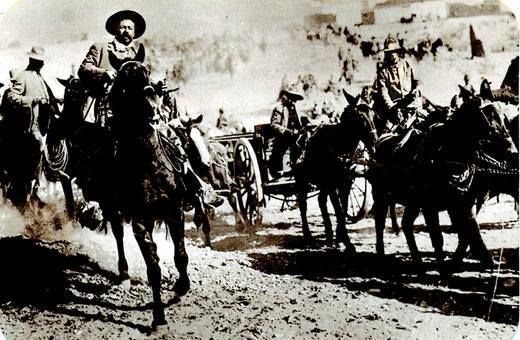 In 1915, the Mexican Revolution had been going on for five years. The decades-long regime of President Porfirio Díaz had ended, and a power struggle between elites and the middle classes, in addition to labor and agrarian unrest had led to armed uprisings resulting in the assassination of Diaz’ successor, Francisco I. Madero under the orders of the next president, Victoriano Huerta. Huerta’s counter-revolutionary regime was opposed by a coalition of leaders from the Mexican states, including a Constitutionalist Army led by Governor of Coahuila, Venustiano Carranza, Emiliano Zapata who was leading an armed rebellion in Morelos, and the governor of Chihuahua, Francisco "Pancho" Villa, who led his own army in the northern part of Mexico. However, once Carranza took power, the alliance he’d had with Villa, Zapata and others dissolved and they began fighting among themselves. By spring of 1916, Villa’s army was little more than a disorganized band, wandering northern Mexico in search of supplies. The 1915 Battle of Celaya had been a great defeat for Villa, and his army lacked the military supplies, money, and munitions needed to pursue his war against Carranza. While the reasons for the raid have never been established with any certainty, it is likely out of desperation that Villa planned the raid on the New Mexican border town of Columbus and the adjoining Camp Furlong. He camped his army of an estimated 1,500 horsemen outside of Palomas on the border three miles south of Columbus and waited for the right time to surge over the border and steal the supplies he so desperately needed. 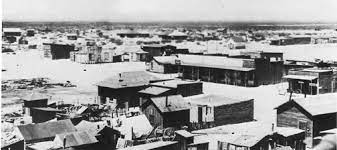 Columbus was a small town of about 300 Americans and about as many Mexicans. Located just three miles north of the border with Mexico. It sat side by side with Camp Furlong, a small garrison intended to patrol and protect the border. It consisted the headquarters troop, one machine gun troop, and seven rifle troops, totaling 12 officers and 341 men, of which approximately 270 were combat troops. Before the raid, Villa sent spies into the town to assess the presence of U.S. military personnel. They reported that only about thirty soldiers were garrisoned at Columbus. This was a significant error. On the night of the raid, approximately half of the 362 soldiers were out of camp on patrol, leave, or other assignments, but even at that reduced number, there were far more troops than Villa anticipated. Not knowing this, Villa moved north and crossed the border about midnight. Maude Hauke Wright, an American kidnap victim who was travelling with the raiding party, stated that Villa only sent 600 of his 1,500 men into the attack because he lacked the ammunition to arm them all. Early in the morning of March 9, 1916, Villa divided his force into two columns. At 4:15, when it was still dark, he launched a a two-pronged attack on the town and the garrison. Most of the attacker approached on foot, their mounts left safely back with the rest of Villa’s troops. Some claim that Villa never crossed the border, but remained in Palomas. Others swear that he directed the attack from Cootes Hill, a small promontory overlooking Columbus. 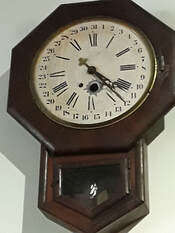 The clock in the Columbus train station,, stopped when struck by a Villista bullet. The clock in the Columbus train station,, stopped when struck by a Villista bullet.The Villistas entered Columbus from the west and southeast shouting "¡Viva Villa! ¡Viva Mexico!" and other phrases. The townspeople awoke to find their settlement in flames and the Mexicans looting their homes and shops. The raid soon escalated into a full-scale battle between Villistas and the United States Army. 2nd Lt. John P. Lucas made his way barefooted from his quarters to the camp's barracks, where he organized a hasty defense around the camp's guard tent, preventing the Villistas from stealing the troop’s machine guns. The troop's four machine guns fired more than 5,000 rounds apiece during the 90-minute fight, their targets illuminated by fires of burning buildings. Soldiers joined with Springfield rifles, and many of the townsfolk had shotguns and hunting guns of their own. 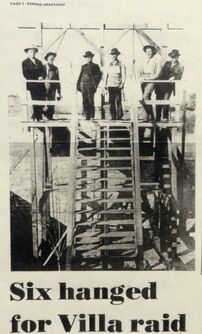 Finally, a bugler sounded the order to retreat and the Villistas disappeared back over the border, pursued by the regiment's 3rd Squadron until it ran low on ammunition and water. Villa announced that the raid was a success, and that he’d captured 300 rifles and shotguns, 80 horses, and 30 mules. However, he’d also lost between 90 and 170 men, 63 killed in action and at least seven more who later died from wounds during the raid itself. The sixty-three dead Villa soldiers and all the dead Villa horses that were left behind in Columbus after the raid were dragged south of the stockyards, soaked with kerosene and burned. Of those captured during the raid, seven were tried and six hanged. Although records are inconsistent, the American dead seems to range between 8 to 11 soldiers and 7 or 8 civilians. 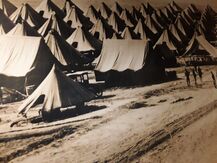 The tents at Camp Furlough when it was at its height. Photo by author, taken at display in Pancho Villa museum The tents at Camp Furlough when it was at its height. Photo by author, taken at display in Pancho Villa museumThe American public was outraged by Villa’s attack and the United States government wasted no time in responding. First on the scene were elements of the New Mexico National Guard. Other National Guard units from around the United States were called up. By the end of August 1916 over 100,000 troops were amassed on the border, with 5,000 headquartered at Camp Furlong. Camp Furlong also had supply facilities and repair yards for the early motor trucks used in Mexico when General John J. Pershing moved the Punitive Expedition into Mexico to track down Villa. Columbus also had the first tactical military airfield in the United States. The 1st Aero Squadron's Curtiss JN3 Jenny biplanes provided aerial observation and communications for the expedition. Following the withdrawal of the Punitive Expedition, the importance of Camp Furlong declined. By 1920, when the Mexican Revolution ended, only 100 men were garrisoned there. All troops were gone by 1923.  Jennifer Bohnhoff's historical novel A Blaze of Poppies is the story of a young female rancher who is trying to keep her family's ranch and a member of the New Mexico National Guard who is in the area to protect the border. Agnes Day and Will Bowers both get drawn into Pancho Villa's raid, the ensuing Punitive Expedition, and World War I. Inspired by real stories set in the time and area, this is a work of fiction that will inspire and educate as well as entertain. |

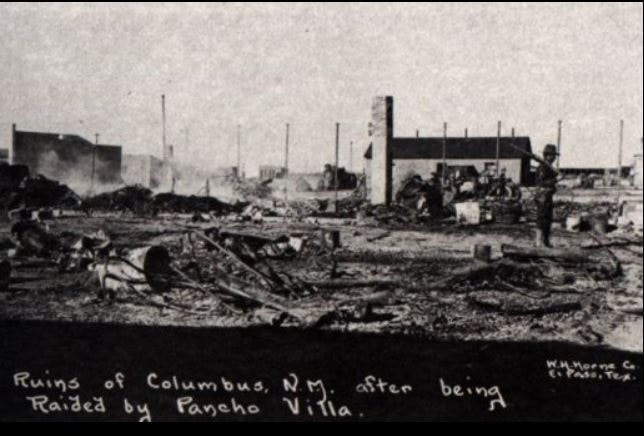
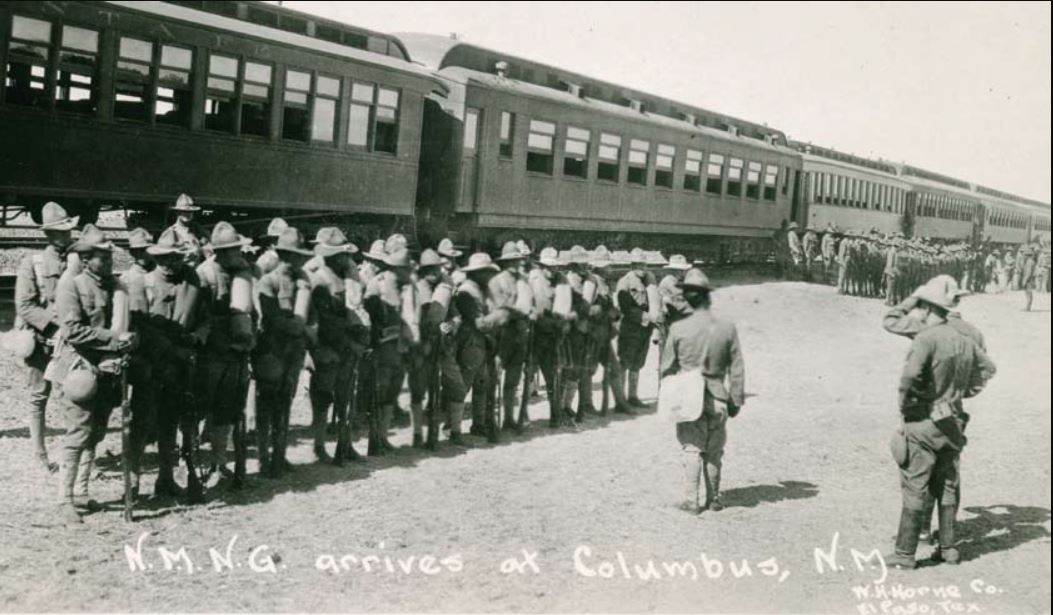




No comments:
Post a Comment